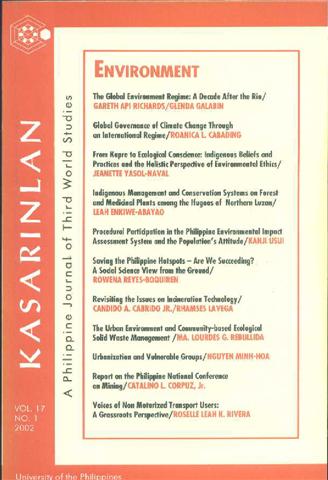Urbanization and Vulnerable Groups
Abstract
Social stratification or the widening of income gap between the rich and the poor becomes a serious predicament whenever Asian countries experience rapid urbanization and industrialization. The author explores the urbanization of Ho ChiMinh City (HCMC) and the vulnerable groups created by its processes, notably, a new urban poor sector comprised of spontaneous immigrant groups. Vulnerable groups, defined as "individuals or households who have unstable lives", account for
the swelling urban population, high crime incidence and social unrest. A thorough study of these groups could positively transform government policies and the public mind-set toward them. Four conditions are described as vulnerability factors: 1) weak policies of the leading party and the government, 2)problems in the household, 3) risk and sudden changes, and 4) lack of social capital. To measure social poverty, the concep..s of vulnerability and vulnerable groups are introduced
as a quid pro quo of the quantitative indicator poverty line (Pl). Urbanization, through the conversion of agricultural lands into industrial and commercial zones, alters the job structure of the rural sector. Rural farmers struggle to adjust to new social circumstances. Moreover, the poor are disenfranchised of their rights to affect the government's decision-making process. The phenomenon of "virtual urban planning" emerges, as huge urban projects remain unfulfilled because of social impediments.
Published
2008-09-17
How to Cite
MINH-HOA, Nguyen.
Urbanization and Vulnerable Groups.
Kasarinlan: Philippine Journal of Third World Studies, [S.l.], v. 17, n. 1, sep. 2008.
ISSN 2012-080X.
Available at: <https://journals.upd.edu.ph/index.php/kasarinlan/article/view/1066>. Date accessed: 25 aug. 2025.
Section
Research Reports
Keywords
Urbanization; Vulnerable Groups
By submitting a manuscript, the authors agree that the exclusive rights to reproduce and distribute the article have been given to the Third World Studies Center.



